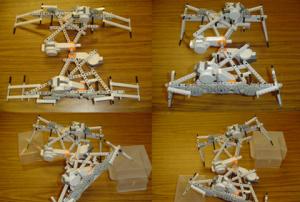Jan 31 2011
Josh Bongard, a researcher at the University of Vermont, has developed a line of robots that can evolve their shape, almost like a tadpole turning into a frog. The researcher is an assistant professor at the university’s College of Engineering and Mathematical Sciences.
Bongard’s robots can change performance of different parts of the body over lengths of time. This development will be a deviant from the normal robots that feature fixed forms and performed tasks they have been programmed for. The new creation will learn specific behaviors. They will not only change the form they are created in but also learn successive behavioral patterns. The whole process will resemble the evolution of a man from a baby to an adult. This is an endeavor to create a humanoid that will respond to a soft voice and move without toppling over.

Although some of these robots are shaped like snakes that slide along, or lizards with legs or spread-out legs, finally they begin to look like a human, stand up on two legs, and know how to walk. The robots have ribbed spines, and feature 12 components that move. The whole skeleton is very simply designed, and there are four sticks or limbs. The prototypes were fabricated from Lego's to track the evolution process. Thee prototypes looked like robots on four legs, and had braces on all limbs that could help slant them, helping the operator to simulate specific movement patterns moving from horizontal to vertical directions.
To create the final product, Bongard used 5,000 computerized simulations taking about 30 h to complete each one. These simulations were carried out on parallel processors to derive artificial models to move around in 3D space. Each version then ‘ran’ a genetic algorithm, or a software that enabled it to learn different body functions such as slithering, crawling or walking, with one task being assigned to each generation. This will help it move systematically towards a source of light without stumbling. Bongard claims that robots created like this moved about in a stronger manner and did not fall over. They were also able to attempt new challenging tasks.